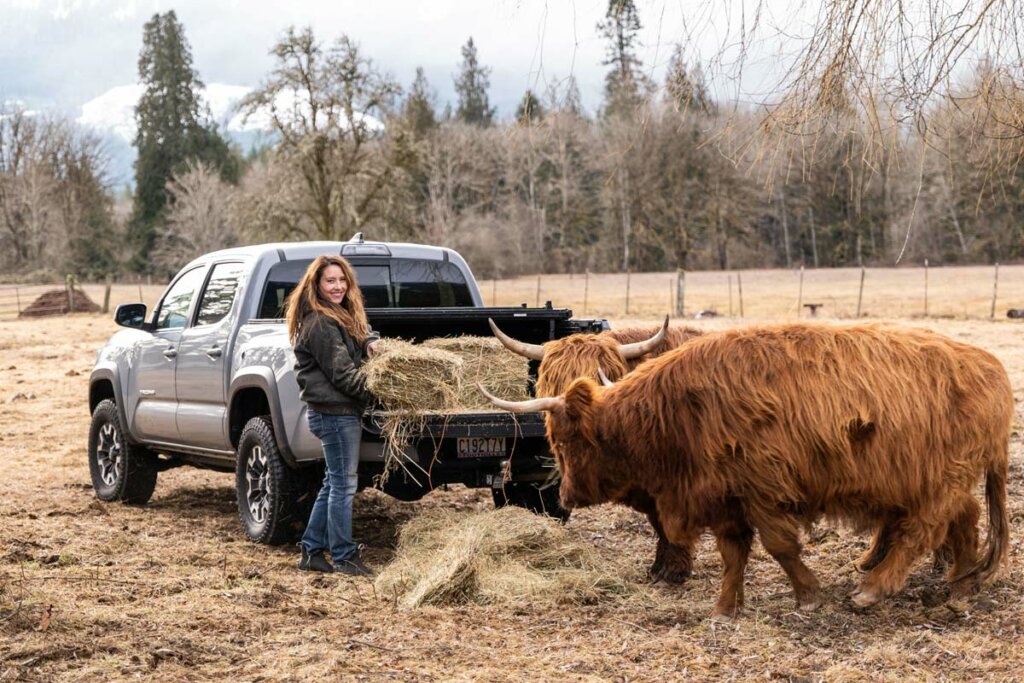When it comes to butchering at home, there are many roadblocks that keep people from even starting. In this post, learn everything you need to know about butchering large animals at home.
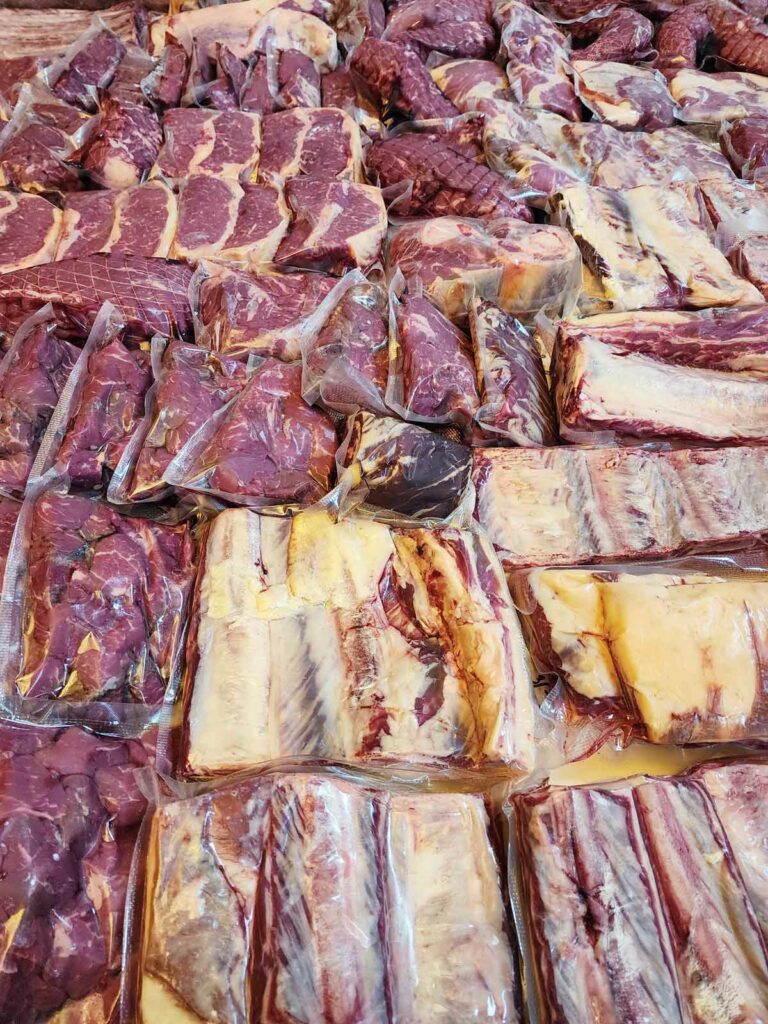
Table of Contents[Hide][Show]
About Andrea
Andrea Huehnerhoff, her husband and four children run a small family farm in the Chuckanut Mountains of Washington State.
She co-hosts the Ancestral Kitchen Podcast with Alison Kay, where they discuss practical and creative strategies for bringing ancestral food into our modern kitchens and helping families bring nourishing foods back to their tables in a realistic and enjoyable way.
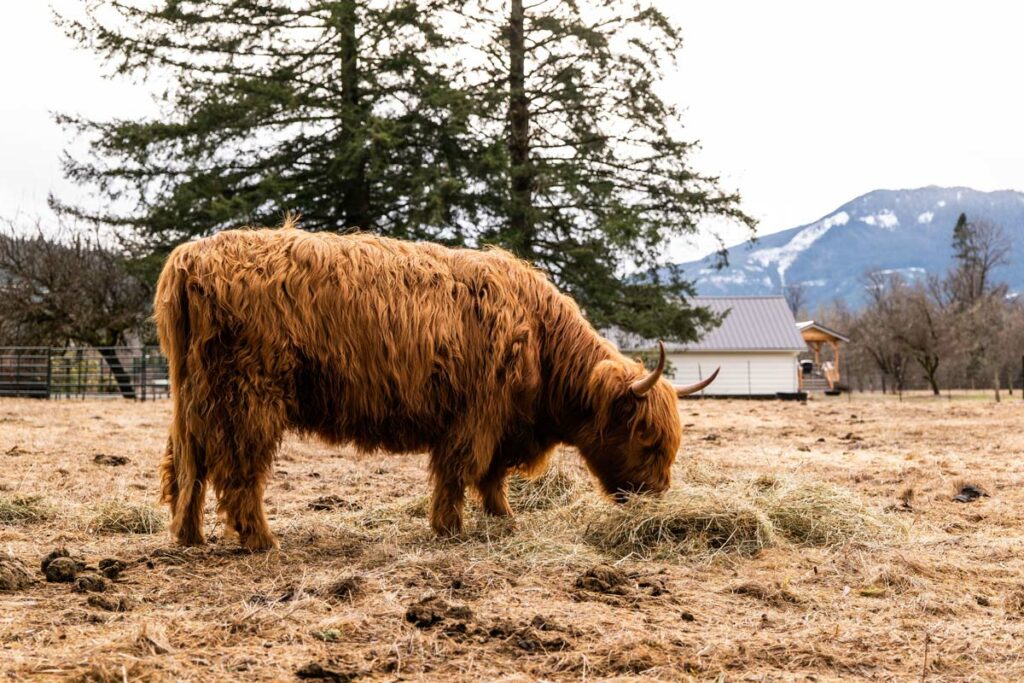
Why Butcher Animals at Home
There are so many reasons why someone might choose to butcher their animals at home. We butcher meat birds ourselves and have an article on how to butcher pigs. For our larger animals, we have a butcher come out with the mobile slaughter and take them back to process at his shop.
Whether butchering yourself or hiring it out, I recommend reading this post on what you need to know on butcher day and also know the cuts of beef to get before the butcher calls.
Andrea has a fantastic PDF filled with all the resources that she mentions in the podcast. So be sure to download this Large Animal Partial Butchery at Home PDF.

Different Methods for Butchering Large Animals
When it comes to butchering large animals on a small homestead, it doesn’t have to be an all-or-nothing approach. Andrea encourages you to get involved in as many aspects as possible.
If you lack the proper supplies to shoot, gut, skin, hang or age a steer, consider hiring that process out and doing the rest of the butchering yourself.
We’ve all never butchered a cow until we have. Sometimes, all it takes to get over that hurdle is to come alongside someone and assist them to give you the confidence to do it yourself.
Mobile Butcher
There are many mobile butchers who will come to you to butcher your animal. They then bring it back to their shop to hang and process it. Get to know your butcher, and if you’re having animals slaughtered annually, get on their waiting list because sometimes their waiting list is long, upwards of two to three years!
Andrea utilizes the mobile butcher to slaughter, gut, skin, hang and age the steer but will bring the steer back home for butchering.
Home Butchery
If you think you’re ready to dive into home butchery, you need to acquire some necessary supplies first. Also, consider where you will do the actual butchering.
Where you butcher your animals will vary depending on the time of year and the climate you live in. If it’s winter (and nice and cold outside, you can likely butcher your animal outdoors or in an unheated garage.
If butchering in the summer and the temperatures are soaring, you may want to move your operation indoors.
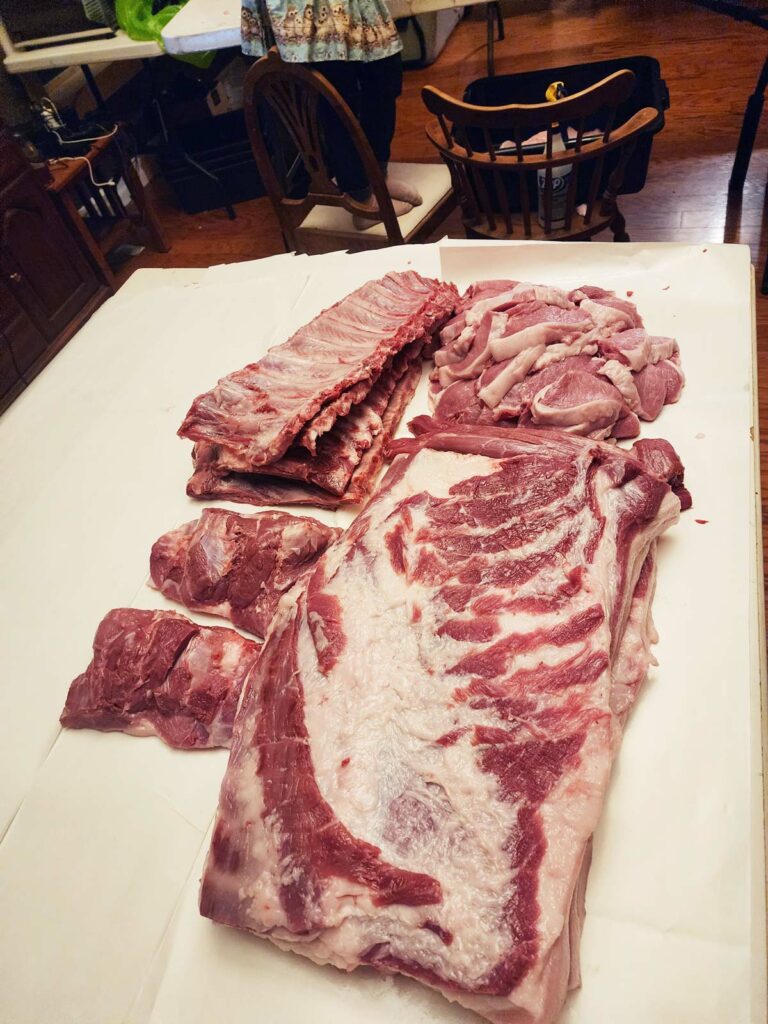
Basic Butchering Skills
When it comes to butchering large animals, they can vary with how they look from animal to animal based on how it was raised and fed. To get your feet wet with knowing what to look for, Andrea recommends watching some YouTube video tutorials.
You can also check out the book Ethical Meat Handbook by Meredith Leigh. Andrea highly recommends her book if you don’t want to watch tutorials on YouTube.
How Long Does Butchering Take
It’s one thing to watch a YouTube video where someone processes an entire animal in eight minutes flat, to then trying it yourself only to find it takes hours instead of minutes.
Andrea says a large steer will take closer to two days of breaking down, cutting, packaging and wrapping. You have to remember that butchering only once or twice a year (vs. a butcher who does this daily and has spent his entire life devoted to this craft) will take much longer.
This is why having the necessary supplies to keep the meat cold is so important.
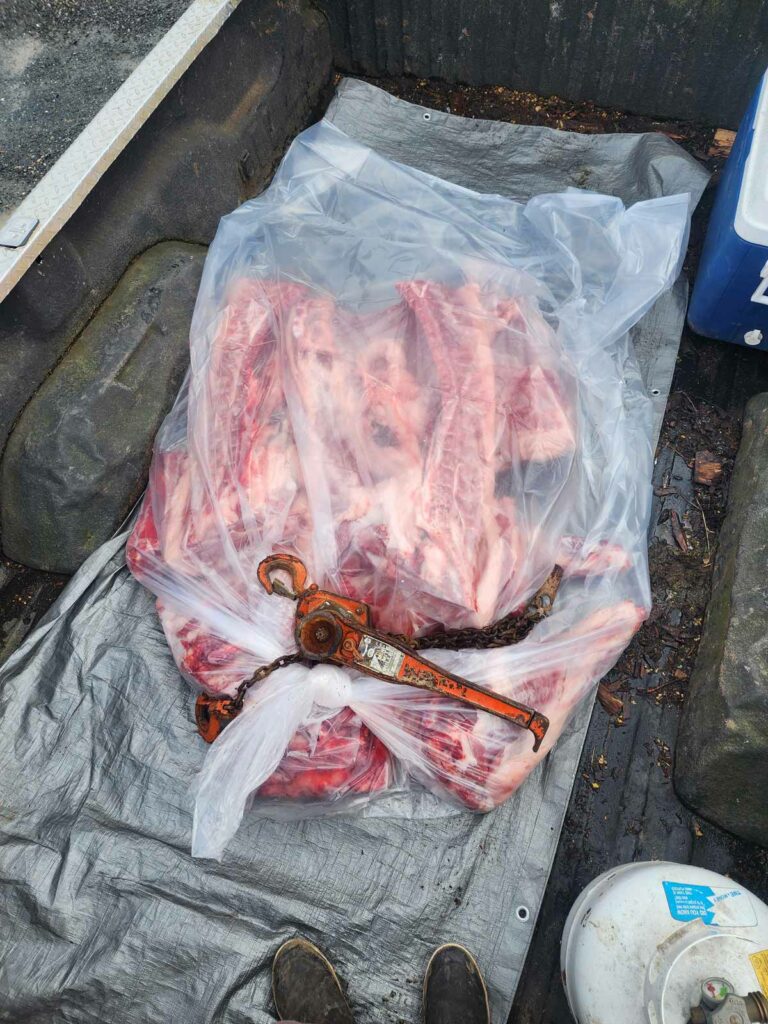
What to Expect
When butchering meat at home, expect to end up with a lot more product than you’d typically get back from the butcher. Even when you ask for the offal, bones, fat, etc. There are usually a lot of those items that don’t come home with you.
Again, knowing what cuts of meat you want ahead of time will help drive your decisions during the butchering process. Andrea lets her husband know how many pounds of ground meat and stew meat she wants ahead of time, which determines many of the decisions later on.
Andrea had a fantastic recommendation of keeping a spreadsheet filled out with the various cuts you get from the animal (including how many pounds of bones, fat, etc.). This helps you figure out how much meat is needed to feed your family for a year and can help you plan how to raise enough meat per person for a year.
Andrea also likes this information to determine how much the animal costs per pound.
When all was said and done, Andrea said there was only about one bussing tub full of scraps, sinew, etc., that was unusable from the steer. The beauty of butchering at home is you can keep all the scraps and turn them into dog food.

Tools Needed
- Large Surface – You’ll need a large surface (ideally that can be wiped and sanitized) that can hold the weight of the animal and has plenty of space. You may also want an additional table or countertop to pile the already-cut meat before it’s wrapped and stored.
- Sharp Set of Knives – Sharp knives are essential for butchering. Andrea recommends a long machete-style knife, a breaking knife and a boning knife.
- Bone Saw – Though this isn’t mandatory (Andrea used a tree saw the first time she butchered at home), but having a bone saw is recommended.
- Cutting Boards – So you don’t ruin your tables, cutting boards are also important.
- Tubs & Bowls – Andrea says bussing tubs have been an incredible addition to her butchering tools. When she just got started, she used every pot and pan in her kitchen. Her family has added a couple new bussing tubs each year.
- Apron – A waterproof apron is fantastic for saving your clothes. I love the Grunder’s overalls and will just hose them off when the butchering is done.
- Gloves – If you want to wear gloves, this is a personal choice, but they’re great to have.
- Freezer Packaging –
- Food Saver Vacuum Sealer (optional) –
- Meat Grinder (optional) – This is also an optional addition to your butchering tools. They make various meat grinders at various pricepoints. There’s even a small meat grinder attachment that you can get for your KitchenAid stand mixer.
One thing to consider if you’re going to have the animal slaughtered and hung at a butcher shop but process the meat at home is to have a way to transport the beef back home and keep it chilled while butchering.
Andrea purchased old coolers from a thrift store and lined the bottom with ice and a layer of sheet plastic so the beef would stay cold but not sit in a pool of water.
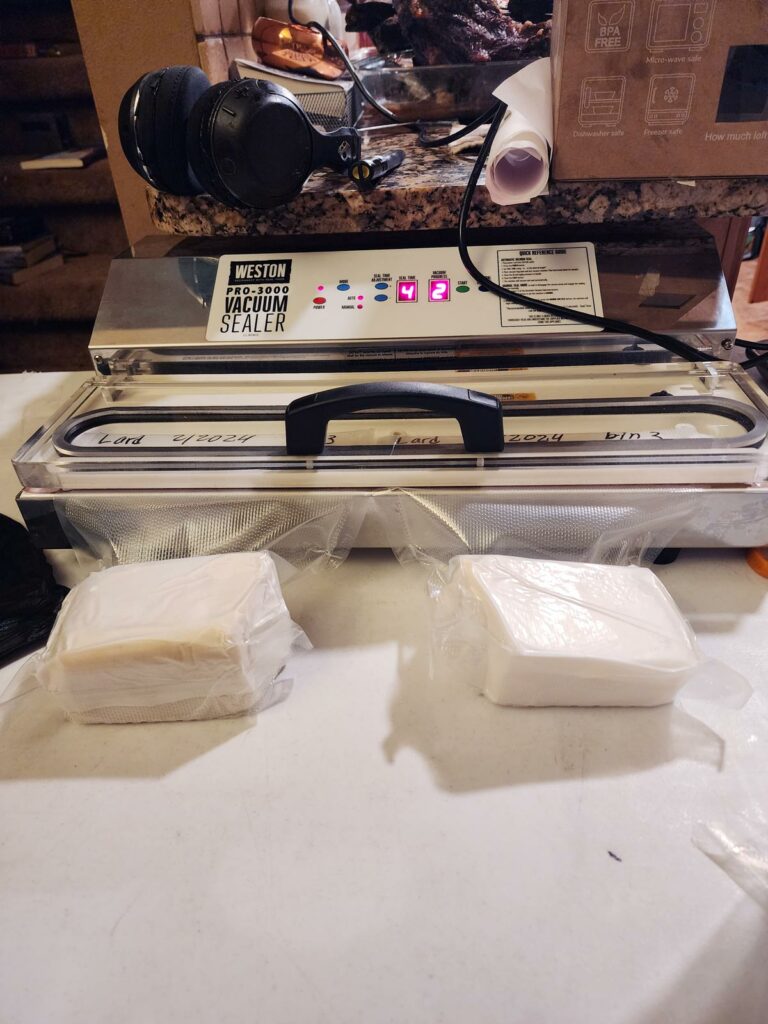
How to Package It Up
There are many different methods for packaging meat. Andrea used a roll of brown butcher paper and string (available at restaurant supply stores) the very first time they butchered. Though she doesn’t recommend this method as the best, if it’s all you have available, don’t let that keep you from butchering your own animal.
Andrea now packages the meat using a vacuum sealer and plastic freezer bags. You can also use freezer zip-top bags that are easy to find at most grocery stores.
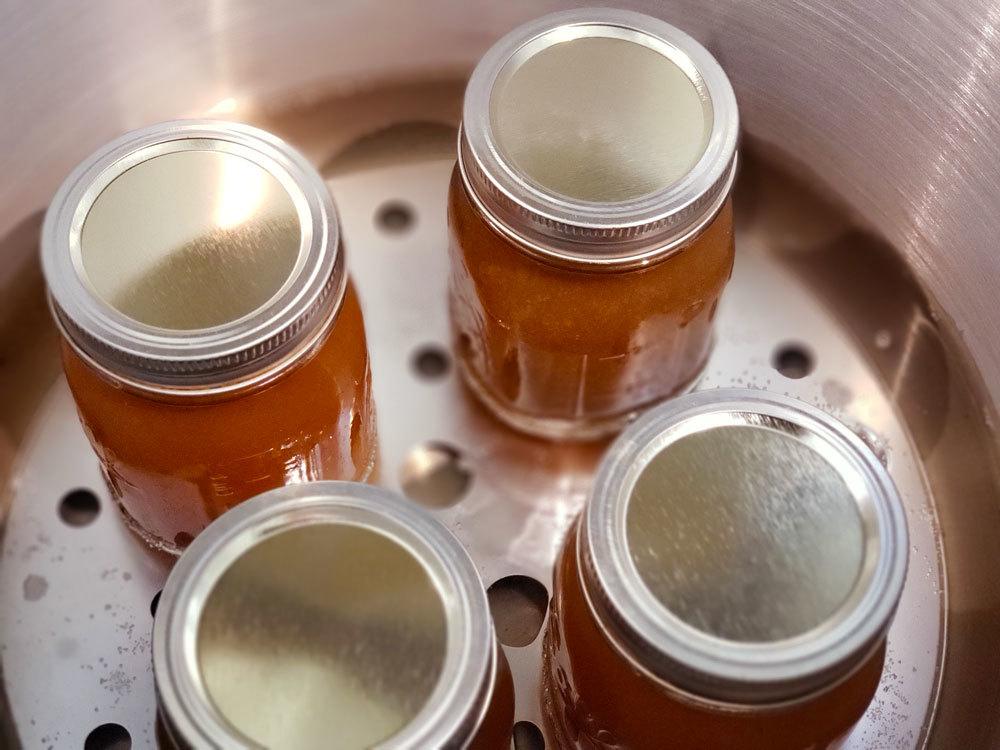
What to Do With the Bones
On butchering day, you’ll end up with a lot of bones. You can either bag and freeze them until you’re ready to make broth later or start making homemade broth while still butchering. Here is my homemade chicken broth recipe. You can follow the same method for beef broth with the additional option of roasting your bones in the oven at 375°F for an hour before boiling them. This gives an added depth of flavor to your broth.
Andrea likes to fill two large turkey roasters with bones and herbs and let them simmer for 12 hours per batch while the butchering process is happening. When done, she is ready to can the bone broth for the pantry.
If your butcher is processing your meat, I always like to request the bones get cut into three-inch pieces so they fit into any container I want to make broth in (like the Instant Pot).
Make it a Working Bee
If you caught my previous podcast episode with Andrea, in which we discussed putting together old-fashioned Working Bees, butchering an animal as a community would be a perfect activity!
The bottom line here is to start making strides to butchering your meat at home. Whether doing part or all, butchering your meat at home will add up quickly and save you thousands of dollars in the long run.
Where to Find Andrea
You can listen to Andrea on the Ancestral Kitchen Podcast or catch her over on Instagram @farmandhearth. Be sure to download the Large Animal Partial Butchery at Home PDF so you have links to all the resources Andrea mentioned in the podcast.
